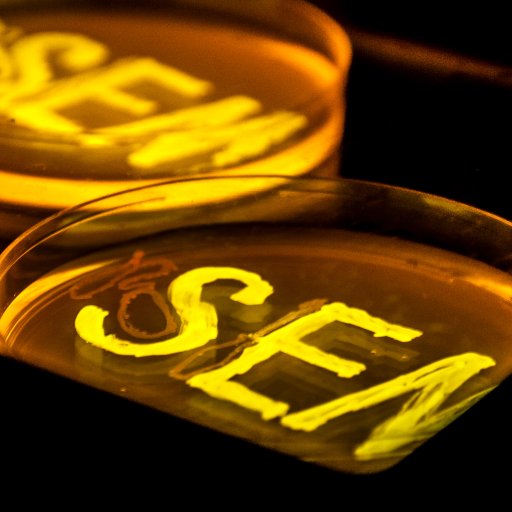
Nikel SEM Group
@LabNikel
Followers
2K
Following
989
Media
225
Statuses
796
Building synthetic metabolisms in bacteria for a sustainable future @DTUBiosustain · Views are our own + #Pseudomonas’ 🧬 ·
Copenhagen, Denmark
Joined August 2018
Seven Critical Challenges in Synthetic One-Carbon Assimilation and Their Potential Solutions—led by @FavoinoGiusi & @OscarPuiggene @LabNikel @FEMSmicro #Microbiology #Reviews #SynBio #Metabolic #Engineering
https://t.co/J7an6ZeBxk
0
11
32
Ins and outs for designing bacterial metabolisms for C1-assimilation, from a multilevel perspective, now pieced together in this review from our @LabNikel! Check it out at
academic.oup.com
In this review, we summarize the challenges in establishing synthetic pathways for assimilation of C1 feedstocks in microbes and how to solve these issues
Seven Critical Challenges in Synthetic One-Carbon Assimilation and Their Potential Solutions—led by @FavoinoGiusi & @OscarPuiggene @LabNikel @FEMSmicro #Microbiology #Reviews #SynBio #Metabolic #Engineering
https://t.co/J7an6ZeBxk
0
3
9
New paper out! Check our new CRISPR toolkit for Cupriavidus necator!
Streamlined and efficient genome editing in #Cupriavidus necator H16 using an optimised SIBR-Cas system—spearheaded by @dellavallesimo & @enricoorsi & led by Costas Patinios + Wei Huang @TrendsinBiotech #SynBio
https://t.co/OW8LANTTn5
0
5
11
New paper out in collaboration w/ @mirbachh from @maxplanckpress and many more! Check Helena's thread for a detailed overview of the manuscript!👇
Really happy to share that our work on constructing six glyoxylate / glycolate sensors covering a three order of magnitude concentration range is out now in @NatureComms ! 🔥 Read below to see how we developed the sensors and what they are good for 🥳. https://t.co/DEGQujQ8x9
0
1
5
Really happy to share that our work on constructing six glyoxylate / glycolate sensors covering a three order of magnitude concentration range is out now in @NatureComms ! 🔥 Read below to see how we developed the sensors and what they are good for 🥳. https://t.co/DEGQujQ8x9
nature.com
Nature Communications - Auxotrophic metabolic sensors (AMS) are vital for bioengineering but are often time-consuming to develop. Here, the authors present a workflow for designing versatile AMS,...
9
8
29
New paper out from our group!
Computation-aided designs enable developing auxotrophic #metabolic #sensors for wide-range glyoxylate and glycolate detection—spearheaded by @enricoorsi w/a choral assembly of cool collaborators @LabNikel @NatureComms #SynBio #OpenAccess
https://t.co/IXyVsaurt2
0
3
9
Preprint alert🚨Systematic #engineering of synthetic serine cycles in #Pseudomonas putida uncovers emergent topologies for #methanol assimilation · @biorxivpreprint led by @OscarPuiggene #SynBio #Methylotrophy #CircularEconomy @LabNikel
https://t.co/3gBucAfUz0
biorxiv.org
The urgent need for a circular carbon economy has driven research into sustainable substrates, including one-carbon (C1) compounds. The non-pathogenic soil bacterium Pseudomonas putida is a promising...
0
8
27
Super exciting work by @OscarPuiggene from @LabNikel on advancing #methanol use by Pseudomonas Putida by engineering #serinecycle variants! Many congratulations, excited to be a part of this !
Preprint alert🚨Systematic #engineering of synthetic serine cycles in #Pseudomonas putida uncovers emergent topologies for #methanol assimilation · @biorxivpreprint led by @OscarPuiggene #SynBio #Methylotrophy #CircularEconomy @LabNikel
https://t.co/3gBucAfUz0
0
2
13
Check our newest preprint 👇!
#Preprint alert 🚨 Genetic dissection of cyclic di-GMP signaling in #Pseudomonas aeruginosa via diguanylate cyclase disruption―collaboration between @LabNikel & Andrea Smania's team in Argentina, led by @martino_RA & @Daniel__Volke @biorxiv_micrbio #CRISPR
https://t.co/LFYy7orWeg
0
0
3
Engineering a phi15-based #expression system for stringent #gene expression in #Pseudomonas putida—led by @EvelineLammens, @Daniel__Volke in a nice collab between @LabNikel & @RobLavigne1's team https://t.co/cdJJj24xyc
nature.com
Communications Biology - The development of a modular, phage-based expression system optimized for Pseudomonas putida enables stringent, tunable and high yield expressions with minimal cytotoxicity.
0
8
32
Congratulations @PabloINik on this great achievement! We are thrilled to congratulate our group leader, @PabloINik, for being elected Fellow of ASM! A well-earned recognition of your outstanding contributions to our field! 🥳
Honored to be elected as Fellow of the #American Academy of #Microbiology! This recognition reflects the incredible work of my past and present collaborators, students, and mentors. Deep gratitude to my nominators and the microbiology community for their support! @ASMicrobiology
0
0
27
CIFR (Clone–Integrate–Flip-out–Repeat): A toolset for iterative #genome and pathway #engineering of Gram-negative #bacteria—our latest contribution led by @FilFederici & Francesco Luppino @LabNikel @DTUBiosustain #OpenAccess #SynBio
https://t.co/SnSjKlNh96
0
10
61
Amazing tool for multiple cycles of genetic engineering of Gram negative bacteria developed by @FilFederici and Francesco, now fully available! @LabNikel
CIFR (Clone–Integrate–Flip-out–Repeat): A toolset for iterative #genome and pathway #engineering of Gram-negative #bacteria—our latest contribution led by @FilFederici & Francesco Luppino @LabNikel @DTUBiosustain #OpenAccess #SynBio
https://t.co/SnSjKlNh96
0
1
3
Leveraging engineered #Pseudomonas putida minicells for bioconversion of organic acids into short-chain methyl ketones by @KaterinaKozaeva, @ManuelNietoDom1, @maxi_prep et al. @ACSSynBio @LabNikel @DTUBiosustain #OpenAccess
https://t.co/rFm2ypWNYH
pubs.acs.org
Methyl ketones, key building blocks widely used in diverse industrial applications, largely depend on oil-derived chemical methods for their production. Here, we investigated biobased production...
1
10
56
We hope this thread is helpful to everyone interested in synthetic biology and metabolic engineering, or simply curious about what our group has been up to in 2024. Have some relax in this break to charge your energies back! 🎉
0
0
3
Finally, this piece from @NicoKrink provides a guided overview of CRISPR-based editing tools for bacteria, offering orientation on their diverse applications, challenges, and improvements, inspired by The Hitchhiker’s Guide to the Galaxy https://t.co/dHaezofHUN
embopress.org
1
0
3
And also Meliawati led this work on Paenibacillus polymyxafor isobutanol production by genes KO and KI, optimizing NADPH regeneration, and identifying key metabolic bottlenecks, offering insights for further biotechnological applications of this bacterium https://t.co/IY9PPeEM39
1
0
1
Touching on new bugs, here @enricoorsi and @dellavallesimo led the work for creating a new CRISPR/Cas toolkit for the emerging C1 platform C. necator, showing unprecedented efficiencies and turnover times for gene deletions https://t.co/B4IjEqcuqT
1
0
2
And in this chapter, w/ @DeMaria_SynBio they outline use of L-threonine aldolases (LTAs) from E.coli and P.putida to efficiently synthesize 4-F-L-threonine in vitro + protocols for adapting these activities to produce other fluorometabolites in vivo 10.1016/bs.mie.2024.02.016
1
0
1
@ManuelNietoDom1 explores here enzymatic synthesis of F-alanine enantiomers using few dehydrogenases, demonstrating efficient production with high enantiomeric excess, and introduces a novel fluorine biocatalysis method for trifluorinated alanine https://t.co/rc6BgZMpl0
1
0
2









